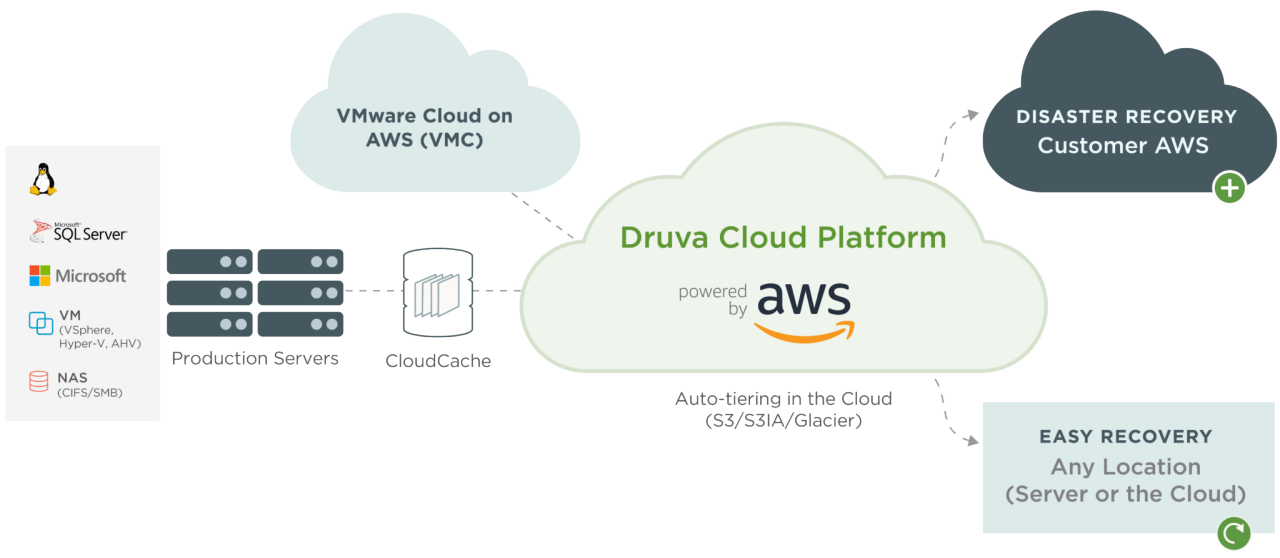Do you think it’s impossible to achieve a 1 TB per hour (1TB/hr) restores in the cloud? Think again.
We are proud to announce that Druva has exceeded the 1TB/hr performance threshold, providing businesses with a clear path to adopt the cloud for server backup and recovery — without having to complicate their on-premises environment. As a result, our customers are able to lower their TCO significantly.
The Needs of the Market
Amazon Web Services (AWS) has consistently proven to the market and to the world that cloud adoption is growing aggressively without any signs of slowing down. As new distributed models emerge and the data that needs to be managed grows larger by the minute, IT infrastructure is rapidly evolving to meet demands. Technology teams still need to deliver on critical service-level agreements (SLAs) despite the changing landscape, which has proven to be a serious challenge for many companies.
Embracing the cloud for data protection and management seems promising, but for many companies, there is still a perceived issue with the upstream and downstream movement of the data and how it might impact their recovery point objective (RPO) and recovery time objective (RTO) needs.
When we created Phoenix CloudCache, our goal was to enable organizations to break through traditional barriers so they could gain all the benefits of the cloud, without compromising SLAs for their mission-critical applications. We can now say, that day has come!
But don’t take my word for it. We’ve found that listening to our customers is the best way to highlight our capabilities.
Listening to Our Customers
One of Druva’s key clients that manufactures treatment systems, has multiple data centers and remote sites with varying bandwidth availability (5 Mbps at remote sites to 100 Mbps at the data centers) and over 40 TB of data to back up. Their environment is more than 90% virtualized, and several of their virtual machines (VMs) run business-critical workloads. It was critical that their backup solution have the ability to restore a 1TB VM in under an hour. While cloud-based backup greatly simplified their backup and restore workflow with central visibility and management, limited bandwidth availability resulted in slower restores, which posed a challenge for their adoption of the cloud. The need to accelerate the movement of data was very real.
This company is only one of our many customers who are in process of adopting cloud and need to deliver on the promises they’ve made to their various lines of business.
Druva’s Cloud Approach
Druva builds tools based on the core principle that the cloud is the future of enterprise infrastructure and applications. We also recognize that companies have very real problems to solve that stem from the current limitations of their infrastructure. This transformation will not happen overnight for most companies. For that reason, Druva has endeavored to bridge this gap for our customers and provide them with the capability to break free of their existing restraints and make the transition to the cloud while still running their business.
Under the Hood
CloudCache locally stores backup data to enable faster restores and is designed to operate as an optional component within the overall Druva Phoenix solution. This option was designed specifically for customers who are currently constrained by bandwidth and have aggressive backup and restore SLAs. As their bandwidth improves at their backup sites, customers who are using Phoenix CloudCache can seamlessly remove it without disrupting any of their backup and restore processes.

